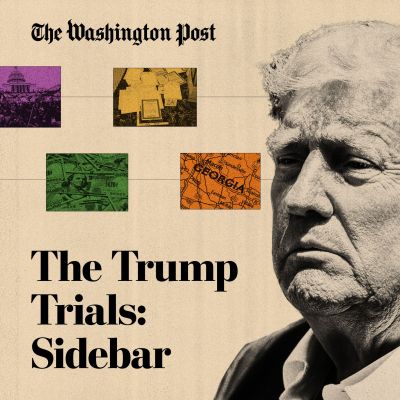The Washington Post’s Libby Casey, Rhonda Colvin and James Hohmann gather for a weekly conversation about former president Donald Trump’s ongoing legal troubles. As trials loom in New York, Florida, Georgia and Washington, D.C., the team will break down the most important – and historic – twists and turns, all as Trump seeks a second term as president. The crew will sit down each Thursday (with the occasional breaking news episode) to discuss what has happened that week, and what’s coming up the next week – often with guest appearances from Washington Post reporters. Listen in to see how you can submit your own questions for the team to answer.
Trump’s response to unrest raises concerns among those trained to detect democratic regression
Earlier this week, the country watched as the U.S. president walked across Lafayette Square outside the White House to stand in front of St. John’s Episcopal Church, hold a Bible and take a photo. In a speech from the Rose Garden moments earlier, President Trump threatened to deploy troops to control protests if state and local authorities did not immediately regain control of their streets.
For Trump to make that trek to the church, flanked by the secretary of defense and the chairman of the Joint Chiefs, among others, law enforcement officials forcibly and aggressively cleared peaceful protesters from the area.
That moment, which we brought you an episode about on Tuesday, has not faded from the public’s mind as the week has gone on. The president has reiterated his assertion that he has the power to deploy active duty military in the United States, a suggestion that has been met with an increasing chorus of rebukes from former military and public officials. Meanwhile, protests have continued across the country, and while they’ve been largely peaceful, protests in the capital have been met with a significant federal law enforcement response.
Taken together, the events of the past week and a half, including the response from our federal government, have painted a picture that raises flags for intelligence officials who’ve been trained to detect countries showing signs of decline or democratic regression.
Former intelligence officials told The Washington Post that the unrest and the administration’s militaristic response are among many measures of decay they would flag if writing assessments about the United States for another country’s intelligence service. Historically, the United States has urged restraint or denounced crackdowns against protesters or vulnerable groups in other countries.
So the federal response to civil unrest, Trump’s threat to deploy the military inside the United States, aggressive law enforcement tactics to quash protests, all of this presents serious questions about the president’s approach to power. Can Trump use tactics at home that the United States condemns abroad? What are the risks of politicizing the U.S. military? And what insight can we gain from how other countries have emerged from crisis?
On this episode of the“Can He Do That?” podcast, national security reporter Greg Miller describes concerns raised by intelligence officials about this moment in the United States and its potential implications.
Related reading and listeningTrump threatened military action to quell protests. Can he do that?Pentagon chief balks at Trump’s call for active-duty military force on U.S. citizens, and Mattis rips presidentPolice keep using force against peaceful protesters, prompting sustained criticism about tactics and training
